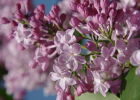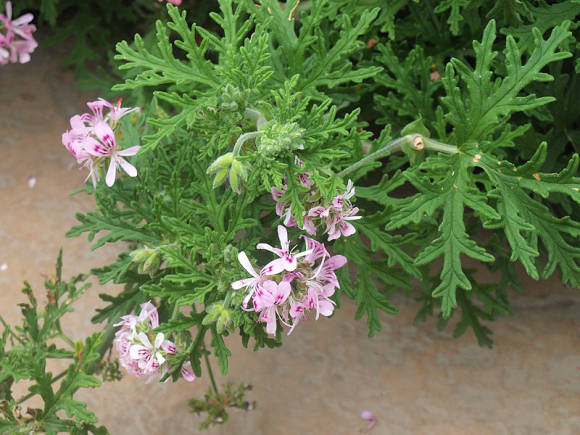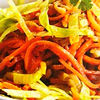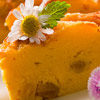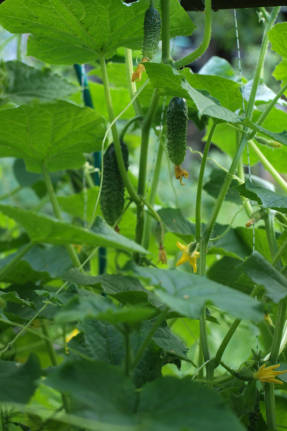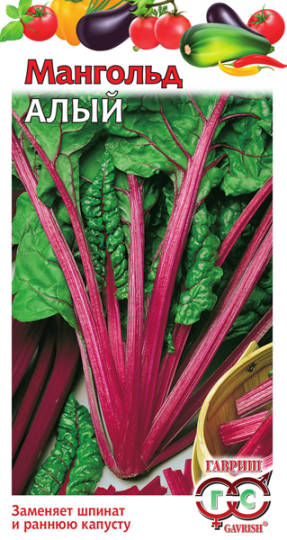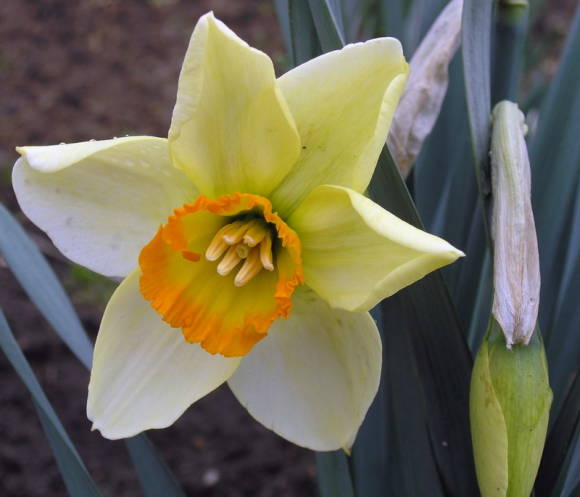It just so happens that the nightshade family has turned out to be quite sinister in literature and history. Well, what can you do - authors and historical characters love to get rid of unwanted ones with the help of henbane juice, dope or belladonna.
 |
The very name "dope" does not evoke pleasant associations. But dope is not homogeneous, although almost all contain alkaloids in varying amounts. As a rule, when mentioning poisonous properties, we are talking about ordinary dope, which is widespread as a ruderal weed in the southern regions of Russia. Sometimes it is found as an invasive species in the south of Western and Eastern Siberia and in the Primorsky Territory. It grows near dwellings, in garbage places, wastelands, along roads, in crops. Rises up the mountains to the mid-mountain zone. The folk names of the plant are rather ominous - hemlock, vodian, glomusha, cocklebur, foolish drink, divderevo, dydor, mad potion, prickly, mullein, cows, mad or drunk cucumbers, stupid grass, shawls, crazy grass, crazy grass.
 |
Datura ordinary (Daturastramonium) - an annual plant of the nightshade family (Solanaceae), 40-100 cm high. The stem is erect, smooth, branched in the upper half. Leaves 7-20 cm long, ovate with a pointed tip and sharp lobes, green above, lighter below. There are specimens with anthocyanin coloration of stems and leaf petioles. The flowers are white, sometimes lilac along the veins, large, funnel-shaped, 7-12 cm long, located singly in the forks of the stem and branches on straight fluffy pedicels sticking upward, very showy. Flowering lasts a very long time. Fruits are large, 5-7 cm long, ovoid, erect, green capsules, covered with hard thorns. Blossoms in May-September; bears fruit from July.
Dangerous alkaloids
All parts of the plant are poisonous, but the seeds are especially dangerous.
Datura contains 0.2-0.6% alkaloids (hyoscyamine, hyoscine, atropine, scopolamine, noratropine, norscopolamine, apoatropine, aposcopolamine), which cause parasympathicotropic and antispasmodic effects: they reduce the muscle tone of the gastrointestinal tract, bile ducts and gallbladder, bronchi, etc.
Given its fairly wide distribution, dope poisoning has been known in history for a long time. The literature mentions the poisoning in 1676 of a group of sailors under the command of Captain John Smith, who mistakenly ate dope leaves in a salad (although, given the rather nasty smell of the plant, this fact is perplexing). In another incident, a little later, a group of English soldiers were poisoned, mistakenly eating dope leaves instead of something edible.
The clinical picture of poisoning and its consequences were described quite accurately by the famous Russian writer and poet I.A. Bunin in the poem "Datura":
The girl ate the dope,
Nauseous, head ache,
Cheeks are burning, sleepy
But the heart is sweet, sweet, sweet:
Everything is incomprehensible, everything is a mystery,
Some kind of ringing from all sides:
Without seeing, he sees a different gaze,
Wonderful and unearthly
Hearing clearly catches hearing
Delight of heavenly harmony -
And weightless, disembodied
The shepherd brought her home.
The next morning the coffin was put together.
They sang over him, kicked him,
Mother burst into tears ... and father
I covered it with a board lid
And he carried it to the churchyard under his arm.
Is it really the end of the fairy tale?
Poisoning proceeds according to the type of acute psychosis with hallucinations, motor and speech excitement is observed. For these "stupefying" symptoms, the plant got its name. There is dryness of the oral mucosa and skin, skin rash, dysphagia, hoarseness, hyperemia of the mucous membranes of the pharynx; thirst, nausea and vomiting, urinary retention, intestinal atony, body temperature may rise. From the side of the eyes - accommodation paralysis (as after instillation of atropine at the ophthalmologist), lack of reaction of the pupils to light.Tachycardia is noted, the pulse is abnormal, rapid (up to 200 beats per minute), possibly an increase in blood pressure. Psychomotor agitation up to a violent state is combined with hallucinations (delirium), convulsions. Symptoms of poisoning develop in a large time range - from 10 minutes to 10-15 hours. In severe cases, a fatal outcome is possible.
Naturally, such a bouquet should be treated by a toxicologist, to whom the victim should be delivered as soon as possible. While waiting for the doctor, you can wash the stomach with sodium bicarbonate solution or take activated charcoal (2 tablespoons per 0.5 liters of water).
The question arises - why are these horrors described? Because dope in recent years has been loved as an ornamental plant and you can not overlook the site, and a tragedy will happen. And as the ancients said, “Forewarned is forearmed,” because in case of poisoning, minutes sometimes play a decisive role.
Not only poison, but also a medicine
But dope can also be a medicine. It is grown in the fields specifically for the production of these poisonous alkaloids. For the convenience of harvesting, they even bred the Besshipny variety. Its raw material is the leaves, which are harvested from the beginning of flowering to the end of fruiting. The active substances of the plant are hyoscyamine and scopolamine, alkaloids of the tropane group. When chemically excreted from a plant, hyoscyamine is converted into a dextrorotatory inactive form. Atropine is a mixture of active levorotatory and inactive dextrorotatory isomers. The levorotatory isomer is called hyoscyamine, it is about twice as active as the racemate (i.e. atropine). The main pharmacological feature of hyoscyamine is the ability to block M-cholinergic receptors. By the strength of the anticholinergic action on the circular muscle of the eye, hyoscyamine is 0.5-2 times stronger than atropine. Hyoscyamine speeds up heart contractions, reduces the secretion of the salivary, gastric and sweat glands and the secretion of the pancreas, lowers the tone of smooth muscle organs (bronchi, abdominal organs, etc.). Under the influence of hyoscyamine, the pupils dilate strongly and for a long time. It tones and stimulates the respiratory center. This effect is more pronounced when the respiratory center is suppressed by alcohol or sleeping pills. Datura drugs are used in medical practice only on the recommendation of a doctor mainly as antispasmodics: in case of bronchial asthma, spastic conditions of the abdominal organs (gastric ulcer and duodenal ulcer, cholecystitis, colitis, hepatic colic, spastic constipation, etc.), cardiovascular diseases with symptoms of increased inhibitory vagal influences on the heart, with atrioventricular block, bradycardia. Datura drugs are also used for the prevention and treatment of seasickness and air sickness, relief of attacks of Meniere's disease. Sometimes they are used to reduce the secretion of mucus and saliva during plastic surgery on the face and upper respiratory tract. Datura leaves are a part of Astmatin and Astmatol anti-asthma cigarettes for smoking. Datura drugs are contraindicated in glaucoma. In addition to ordinary dope, Indian dope is similarly used in medicine (Daturainnoxia). Photo by the author


Application in medicine
Contraindications


